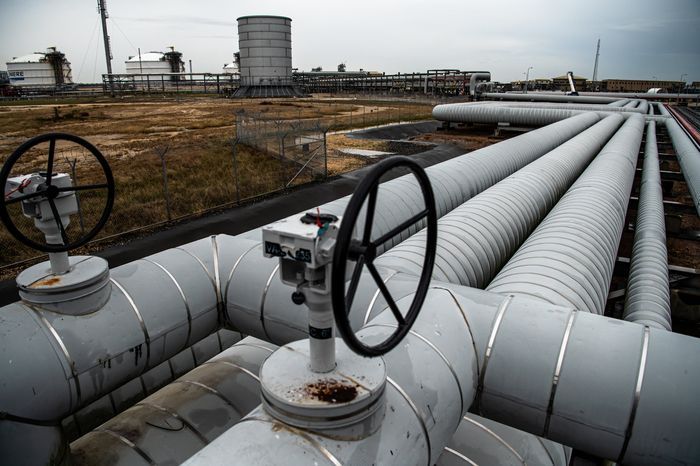About Bridge Fuel
- Bridge fuel is a commonly-used term for a fuel that will power society with the least environmental cost while we deploy non-polluting, renewable energy.
- The goal of using a bridge fuel is to replace the bulk of today’s fossil-fuel-dependent energy sources as we transition to a cleaner and more renewable energy economy that is free of greenhouse gas emissions.
- The length of the bridge and the energy source used to build the bridge are both topics of debate.
- Many people consider natural gas a bridge fuel because it produces less greenhouse gas during the combustion process.
- However, additional considerations for a bridge fuel include whether it increases national energy independence while reducing pollution-related costs.
Key Facts about Natural Gas
- Natural gas is a fossil fuel. Like all fossil fuels, it is a nonrenewable resource.
- It is a mixture of gases which are rich in hydrocarbons.
- It is a colorless and odorless gas composed of 70-90% methane (CH4). Its other ingredients include ethane (C2 H6) and propane (C3 H8).
Possible impurities include carbon dioxide (CO2), hydrogen sulfide (H2S), and nitrogen (N).
How did natural gas form?
- Millions to hundreds of millions of years ago, the remains of plants and animals (such as diatoms) built upin thick layers on the earth’s surface and ocean floors, sometimes mixed with sand, silt, and calcium carbonate.
- Over time, these layers were buried under sand, silt, and rock.
- Pressure and heat changed some of this carbon- and hydrogen-rich material into coal, some into oil (petroleum), and some into natural gas.
- Natural gas reserves are deep inside the earth, near other solid and liquid hydrocarbon beds like coal and crude oil.
Uses:
- It is not used in its pure form; it is processed and converted into cleaner fuel for consumption.
- Many by-products are extracted while processing of natural gas, like propane, ethane, butane, carbon dioxide, nitrogen, etc, which can be further used.
- It is mainly used as a fuel for generating electricity and heat.
- Natural gas in compressed form is used as fuel for vehicles, which is known as CNG.
- It is used as fuel for boilers and air conditioners worldwide.
- It is also used for making fertilizers also, mainly ammonia.
- Natural gas has been called a ‘bridge fuel’ for countries looking to transition away from coal and oil dependency.
- Hailed as a cleaner energy source than other fossil fuels, especially coal, natural gas has a lesser climate impact than coal because it emits 50 percent less CO2 into the atmosphere.
Q1: What are hydrocarbons?
The term hydrocarbon refers to an organic chemical compound that is composed exclusively of hydrogen and carbon atoms. Hydrocarbons are naturally-occurring and form the basis of crude oil, natural gas, coal, and other important energy sources. They are highly combustible and produce carbon dioxide, water, and heat when they are burned. As such, hydrocarbons are highly effective as a source of fuel.
Source: Is natural gas actually cleaner than coal? Growing evidence says maybe not
Last updated on December, 2025
→ Check out the latest UPSC Syllabus 2026 here.
→ Join Vajiram & Ravi’s Interview Guidance Programme for expert help to crack your final UPSC stage.
→ UPSC Mains Result 2025 is now out.
→ UPSC Notification 2026 is scheduled to be released on January 14, 2026.
→ UPSC Calendar 2026 is released on 15th May, 2025.
→ The UPSC Vacancy 2025 were released 1129, out of which 979 were for UPSC CSE and remaining 150 are for UPSC IFoS.
→ UPSC Prelims 2026 will be conducted on 24th May, 2026 & UPSC Mains 2026 will be conducted on 21st August 2026.
→ The UPSC Selection Process is of 3 stages-Prelims, Mains and Interview.
→ UPSC Result 2024 is released with latest UPSC Marksheet 2024. Check Now!
→ UPSC Prelims Result 2025 is out now for the CSE held on 25 May 2025.
→ UPSC Toppers List 2024 is released now. Shakti Dubey is UPSC AIR 1 2024 Topper.
→ UPSC Prelims Question Paper 2025 and Unofficial Prelims Answer Key 2025 are available now.
→ UPSC Mains Question Paper 2025 is out for Essay, GS 1, 2, 3 & GS 4.
→ UPSC Mains Indian Language Question Paper 2025 is now out.
→ UPSC Mains Optional Question Paper 2025 is now out.
→ Also check Best IAS Coaching in Delhi

















